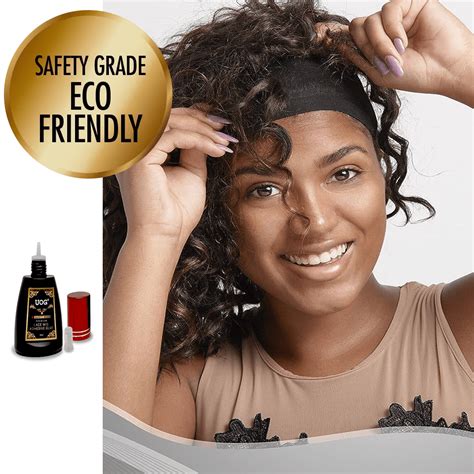Introduction
Achieving a flawless and secure fit for your lace front wig is crucial for a natural and confident look. Lace front wig adhesive plays a vital role in keeping your wig in place while protecting your scalp from irritation. This guide will delve into the essentials of lace front wig adhesive, providing comprehensive information to empower you with the knowledge and techniques for a successful application.

1. Water-Based Adhesives
- Pros: Easy to apply and remove, suitable for short-term wear, gentle on sensitive scalps
- Cons: Lower hold strength, may need reapplication during the day
2. Alcohol-Based Adhesives
- Pros: Strong hold, water-resistant, suitable for long-term wear
- Cons: Can be harsh on sensitive scalps, requires more skill to apply
3. Silicone-Based Adhesives
- Pros: Hypoallergenic, comfortable to wear, provides a natural-looking finish
- Cons: Lower hold strength than alcohol-based adhesives
Consider the following factors when selecting a lace front wig adhesive:
- Hair Texture: Adhesives designed for thick or dense hair textures may not be effective for fine or delicate hair types.
- Scalp Sensitivity: Choose hypoallergenic adhesives if you have sensitive scalp or prone to irritation.
- Wear Time: Water-based adhesives are ideal for short-term wear (up to a day), while alcohol-based adhesives provide a longer hold (up to several weeks).
Step 1: Prepare Your Scalp
- Cleanse your scalp thoroughly and remove any natural oils or product residue.
- Shave or trim excess hair around the hairline for a smooth application surface.
- Apply a thin layer of scalp protector to prevent skin irritation.
Step 2: Apply the Adhesive
- For Water-Based Adhesives: Apply a thin, even layer of adhesive directly to the lace and gently press onto your scalp.
- For Alcohol-Based Adhesives: Apply a small amount of adhesive to your scalp and allow it to become tacky before applying the wig.
- For Silicone-Based Adhesives: Follow the specific instructions provided by the manufacturer.
Step 3: Secure the Wig
- Lace Grip: Use a lace grip headband or wig cap to provide additional support and prevent the wig from slipping.
- Elastic Band: Sew an elastic band around the circumference of the wig to create a snug fit.
- Hairspray: Lightly spray hairspray along the hairline to help set the adhesive.
- Over-Applying Adhesive: Excess adhesive can cause build-up and damage to your wig or scalp.
- Applying Adhesive to Wet Hair: Water can weaken the adhesive’s bond and compromise its effectiveness.
- Not Cleaning the Application Surface: Oily or dirty hair can prevent the adhesive from adhering properly.
- Forcing the Wig: Avoid pulling or tugging on your wig while the adhesive is curing.
1. How long does lace front wig adhesive last?
The duration of the hold depends on the type of adhesive used and individual factors. Water-based adhesives typically last for up to a day, while alcohol-based adhesives can last for up to several weeks.
2. Can I use regular hair glue on a lace front wig?
No, regular hair glue is not suitable for lace front wigs. It can damage the delicate lace and cause scalp irritation.
3. How do I remove lace front wig adhesive?
Use a specialized lace front wig adhesive remover or rubbing alcohol to gently dissolve the adhesive. Avoid using harsh chemicals or acetone.
4. What are the health risks associated with lace front wig adhesive?
Some adhesives can contain harsh chemicals that may cause irritation, allergic reactions, or respiratory problems in sensitive individuals. Choose hypoallergenic adhesives and follow application instructions carefully.
Selecting and applying the right lace front wig adhesive is essential for a secure and comfortable fit. By understanding the different types of adhesives, choosing the appropriate product for your needs, and following the proper application techniques, you can achieve a natural-looking and long-lasting hold. Always prioritize your scalp health and consult a professional if you experience any irritation or adverse reactions.
